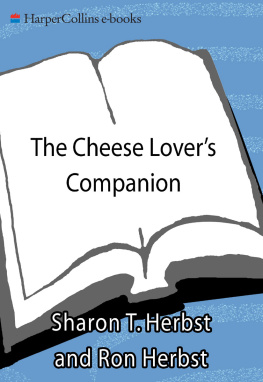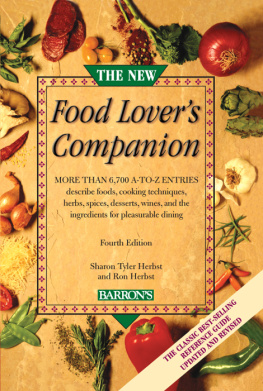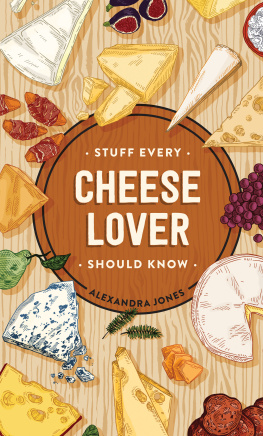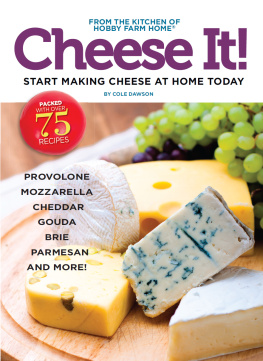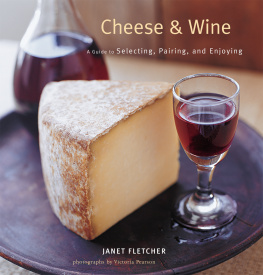We are forever in your debt.
SHARON TYLER HERBST
Sharon Tyler Herbst, my wife and my coauthor, passed away in January 2007, five months after the manuscript for this book was finished.
Sharon established herself as the bestselling author of user-friendly reference books with the publication of The Food Lovers Companion in 1990. It was an immediate success, with four editions and millions of copies in print. For Sharon, however, most of the joy from writing her books came from the journey. Her tireless research and love of writing resulted in tightly written descriptions of thousands of food and drink entries. It gives me comfort to know that The Food Lovers Companion as well as Sharons other books can be found in professional kitchens, on the desks of food writers and editors, and in the homes of those with culinary curiosity.
Sharon wrote many other culinary reference books, including The Wine Lovers Companion , which was the first book I coauthored. While writing the wine book I became aware of what a perfectionist Sharon was, both with reference to the information contained and how it was written. The Cheese Lovers Companion represents another full-out effort by Sharon.
On a personal note, Sharons death is devastating, yet I also realize how very lucky I am. I was married to Sharon for thirty-eight fantastic years. For the last three and a half years of her life, we lived in a small town in a beautiful location on the northern California coast working and playing together. I spent every day and night of those last years with my best friend and the love of my life. We worked many twelve-hour days on this book, sharing the same office, yet we never tired of each others company. I loved watching her light up a room with her positive attitude and marvelous energy. I got to hear her marvelous laugh and see that radiant smile every day while everyone else could only enjoy them occasionally. You should all be jealousI am the lucky one. And I miss her immensely.
Ron Herbst
C heese is a mysterious, passion-inspiring, mind-boggling force of nature that leaves in its wake a sensual afterglow and longings for more. Arguably the worlds most popular food, cheese nourishes the body, energizes the spirit, and satisfies hunger on all levels. It waits quietly in the wings to be noticed yet demands attention once on stage. It sustains, it teases, it begs an encore. As well it should. For cheese is one of humankinds greatest treasures.
C heese is probably the friendliest of foods. It endears itself to everything and never tires of showing off to great advantage.
James Beard
Weve long been passionate about cheese, but it wasnt until we undertook the odyssey that was to become The Cheese Lovers Companion that we could truly comprehend the complex nature of the cheesemaking craft. Understanding the patience and skill and artistry that goes into producing cheese makes our respect for cheesemakers that much more profound. The art of cheesemaking is a delicate balancean intricate, seductive dancebetween the worlds of nature, science, and art. A craft meticulously mastered by the worlds cheesemakers.
We could write pages about the countless theories of how cheese came to be, but that would leave less room for the fact-based nuggets that follow in the A-to-Z section. And the truth is that the origins of cheese will undoubtedly forever remain a mystery. Archeologists have discovered cheese-related hieroglyphics in both Egypt and Mesopotamia (circa 3,500 to 2,800 B.C.), but historians believe cheese may date back to prehistoric timesthough one would be hard-pressed to find complete agreement on the subject.
One popular premise is that the ancient art of cheesemaking originated in the Middle East during Neolithic times. The most exotic legend tells of a nomad who poured milk into his saddlebag (theoretically made from the dried stomach of a ruminant, probably a sheep) and set out across the desert, riding for hours in the hot sun, both he and his saddlebag rhythmically rocking on his camel or horse. When the parched traveler stopped to slake his thirst, he discovered (undoubtedly much to his chagrin) that the milk had separated into a strange mixture of white solids and a thin, milky liquidcurds and whey. At first, one might imagine, the traveler was not amused. But craving moisture, he drank the liquid and tentatively tasted the curd. Mmmm, not bad!
And that, as they say, was the start of something big, for in this mysterious and fortuitous tale we see the combination of the four primary cheesemaking essentialsmilk, stirring, heat, and rennet from the sheeps stomach. A hot and weary wanderer gets the credit in this telling, but whats undoubtedly true is that, as with countless other foods and potables, cheese was discovered simultaneously by different cultures. And so the saga began as humankind discovered a simple yet brilliant way to preserve surplus milk, which has evolved today into the production of thousands of cheeses around the world.
Choosing which of those myriad cheeses to include in this book was certainly no easy task. Including even a third of them would have produced a high-priced, unwieldy tome that simply wouldnt fit within our reader-friendly parameters. What youll find in the following pages is a selection of over 500 of the worlds cheesessome of them well known, others relative newcomers bound for glory. We approached the selection challenge by starting with traditional favorites, then added most of the worlds name-protected cheeses because the quality standards of such classics guarantees consistency. The United States doesnt have an equivalent system, so our American choices focused on award-winning farmstead or artisanal cheeses (our angst in having to rule out so many was eased only by the fact that there are books entirely devoted to American artisanal cheeses). And then there are those cheeses that are so immensely popular that they could not be excluded. Lastly, we included our favoritessome cheeses simply too wonderful to be left out.
That said, as with our Food Lovers Companion and Wine Lovers Companion , we tried very hard not to editorialize. Cheese is an intensely subjective experience and our personal opinions are not what count. The goal of The Cheese Lovers Companion is to deliver the facts and provide the information you need in order to choose your favorites.
Weve organized the listings in a user-friendly A-to-Z format, rather than by country. This makes it easy to flip to a term (cheese or otherwise) without having to check an index. In the otherwise category are definitions for everything from cheesemaking terms (such as BANDAGING, CHEDDARING , and RIPENING ), to foreign terms (like AFFINATORE, LME , and PECORA ), to traditional cheese dishes (such as CHILE CON QUESO, FONDUE , and FRICO ), to various cheese classifications (such as ARTISAN, BLUE-VEINED , and BLOOMY RIND ), and so on. Naturally, phonetic pronunciations are included for all but the most obvious listings.
Of course we couldnt write a book on cheese without including sections on how its made, how to buy and store it, tips on cooking with cheese, serving cheese, and how to pair cheese with wine, beer, and ale. Theres also a Glossary of Cheese Descriptors for those who want to learn cheesespeak. Lastly, there are three sections for those who are looking for a cheese by specifics, be it country of origin, milk type, or type.
In the end we were indelibly enriched by our Cheese Lovers Companion adventure and came away with a new respect and even awe for the wondrous and complex world wed been exploring. Cheese can be simple or complicated, assertive or gentle, luxurious or everyday, and stinky or not. It can revive a bored appetite, nourish body as well as spirit, and invite invigorating conversation. Its one of natures more prized miracles, and one bite is rarely enough. In the culinary universe, the impressive diversity of cheeses must, we think, be matched only by that of wines.

